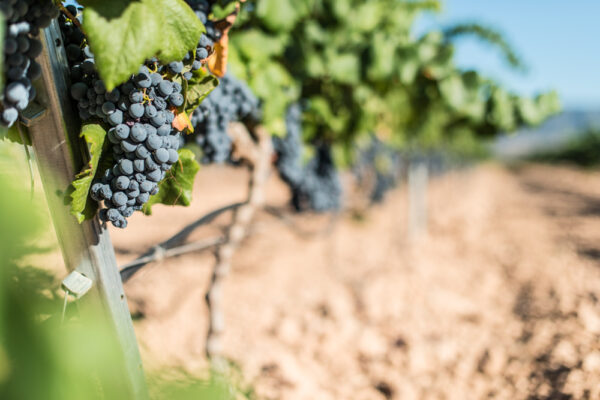The tradition of winemaking in Andalusia spans centuries, with the region renowned worldwide for its prestigious wines. This tradition flourished, particularly during the 16th and 17th centuries, thanks to the growth in maritime trade.
Andalusia’s unique combination of topography, geology, and climate makes it an ideal environment for vine cultivation. The Mediterranean climate, with its mild temperatures, long hours of sunshine, and minimal frosts, alongside varying altitudes and maturation techniques, produces wines of exceptional quality and diversity.
Today, more than 70% of Andalusian vineyards fall under one of six Denominations of Origin, ensuring the highest standards of production. These include Condado de Huelva, Jerez-Xérès-Sherry, Málaga, Manzanilla de Sanlúcar, Montilla-Moriles, and Sierras de Málaga.
During the annual grape harvest, typically from late August to early September, vineyards come alive with activity as workers carefully pick the ripe fruit for pressing. This meticulous process ensures the freshness and quality of the grapes, essential for producing fine wines.
In addition to its renowned wines, Andalusia boasts a rich cultural heritage surrounding winemaking. The region is home to numerous bodegas, specialized museums, and traditional fiestas, all celebrating the art and history of winemaking. Visitors can explore wine routes that traverse picturesque landscapes, sampling local gastronomy and experiencing the rich tapestry of Andalusian wine culture.

Over the centuries, wine producers in Andalusia have adapted their buildings to create an equilibrium between functionality and aesthetics. Bodegas feature high ceilings, thick walls, and sandy soil floors, maintaining ideal temperatures and humidity for wine maturation. In coastal areas like Jerez, bodegas benefit from sea breezes and oceanic winds, further enhancing wine quality.
Andalusia’s Wine Routes combine oenological, cultural, historical, and gastronomic experiences, showcasing the region’s rich heritage. Whether traversing the Condado de Huelva, Sherry and Jerez Brandy, Montilla-Moriles, or Costa del Sol routes, visitors are treated to a journey through picturesque landscapes, historic landmarks, and renowned wineries.
The region’s festive calendar is brimming with wine-related events, particularly during the harvest season in September. From traditional grape stomping festivities to wine tastings and cultural celebrations, there’s no shortage of opportunities to experience Andalusia’s wine culture firsthand.
Andalusia is also home to several wine museums, offering insight into the history, art, and craftsmanship of winemaking. From the Misterio de Jerez Wine Museum in Jerez to Malaga’s Wine Museum and the Toro Albalá Bodegas Museum in Aguilar de la Frontera, these institutions showcase the rich tapestry of Andalusia’s winemaking heritage.
In summary, Andalusia’s long-standing tradition of winemaking, coupled with its diverse terroir and rich cultural heritage, make it a captivating destination for wine enthusiasts and cultural adventurers alike.


